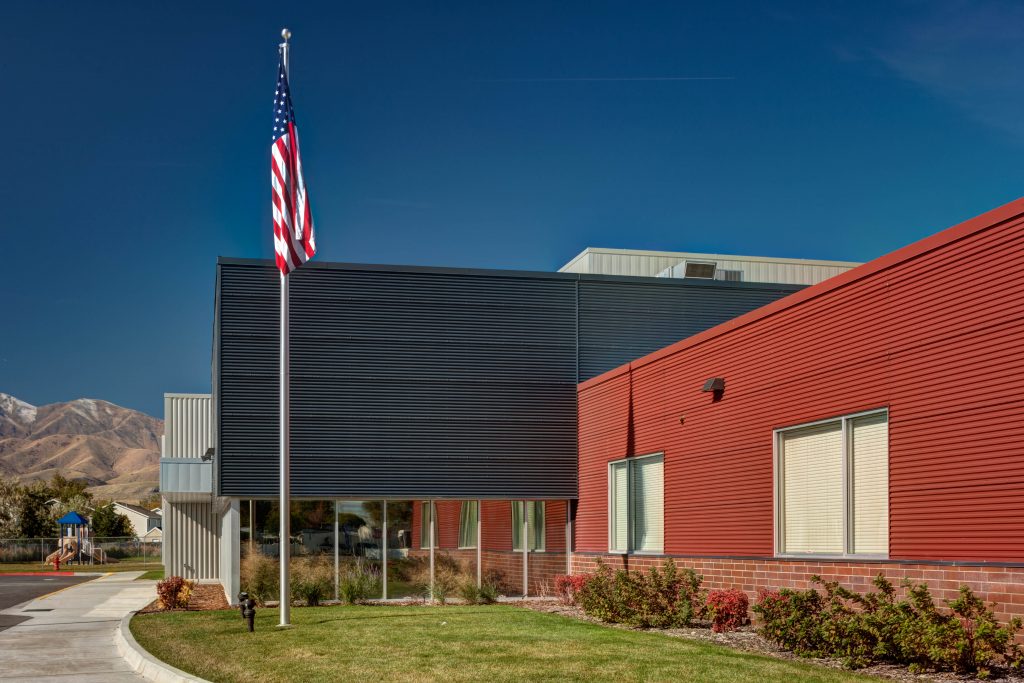The building is designed. The construction schedule is worked out. The materials have been chosen. The trades have been hired. There’s just one more crucial decision to make: The finish.
Metal construction with MBCI already has a long list of benefits basically built in, from enhanced sustainability to superior durability and longevity. But to ensure the long-term, high-performing life of the MBCI materials you’ve invested in, you also need to choose the right finish for your metal components.
Though many people think of finish as simply the color on top of the metal, it’s actually far more. Standard finishes include a primer designed to bind the colorcoat to the metal substrate and provides additional corrosion protection. The colorcoat is comprised of a resin and pigments to create a durable finish in a variety of colors. MBCI’s color finishes are composed of a combination of layers and ingredients to provide you with the best technology for your specific project. MBCI can provide customized finishes that can include additional layers of primer, colorcoat or topcoats depending on the level of protection you choose. The selected resins, pigments and other ingredients determine not only the color and gloss, but how well the finish can stand up to the elements, its expected longevity – and therefore the lifetime of the material it’s protecting.
Which finish?
MBCI offers two categories of standard finishes. The Signature® 200 series of coatings is a silicone modified polyester (also known as SMP). Silicone modified polyester coatings are hard, durable finishes that provide remarkable gloss, color retention and chalk resistance. A perfect choice for doors, wall cladding, agricultural and high traffic commercial projects. The most economical choice, Signature® 200, comes in a variety of stock colors and can also be customized to your specifications.
For premium projects or projects in more aggressive environments, MBCI’s Signature® 300 series of coatings utilize a 70%polyvinylidene fluoride (PVDF) resin. PVDF finishes offer superior color retention and are highly resistant to harsh conditions such as UV radiation, high winds, high altitudes, acid rain, high humidity and other chemically or environmentally aggressive environments. Signature® 300 coatings are perfect for high visibility architectural and industrial projects. If you’re building near the coastline, MBCI carries a special finish formulated to stand up to marine environments and damaging salt spray.
MBCI also provides customized finishes for interior projects wherever corrosive conditions occur indoors, such as in water treatment plants, indoor swimming pools or facilities that use or manufacture caustic, corrosive chemicals.
Color Choices
The popular reds and greens of recent decades have given way to trends toward more natural colors, earth tones, calming blues and natural metallics such as copper and bronze. As MBCI Paint and Coatings Specialist Martin Thompson explains, “MBCI’s stock color options reflect the changes in color trends – and if there is something we don’t offer on the standard color chart, we will customize it for you.”
You can download MBCI’s Color Charts here:
Commercial & Industrial Color Chart
If you don’t find the option you had in mind, contact your friendly MBCI representative to start the color customization process. We can match virtually any shade, but custom colors may require increased lead time.
Maintenance/Best Practices
Once you’ve completed a project, you’ll certainly want to maintain it. While MBCI products require little to no maintenance, there are a few pointers that will help get the longest life and best performance out of your MBCI metal finish:
- Don’t allow cut panel ends to contact uncured concrete — Metal panels are susceptible to corrosion when exposed to chlorides or highly alkaline uncured concrete. Leave a gap between these panel edges and green concrete and ensure good drainage away from walls and off rooftops.
- Keep metal components dry — Corrosion is made possible by prolonged wet conditions. Inspect your entire building envelope at least twice a year, removing dirt buildup, mold, mildew or anything else that traps or holds water against metal components.
- Wash annually — A light washing with household soap or siding cleaner is recommended once a year. In wet environments with excessive organic material like mold or pollen, wash more frequently.
Warranties
We know our finishes are strong, and we stand by them. Both the Signature® 200 and Signature® 300 series come with 30-year colorfastness and 40-year film integrity warranties. Colorfastness refers to the color maintaining its appearance, while film integrity is an indicator of how long the finish will adhere to the panel surface. In exceptionally harsh environments such as heavy industrial or coastal areas, the warranty may be different. Speak to your representative for more details. In case of small scratches or blemishes, touchup paint matching your finish is available through MBCI.
When you’re ready to make decisions on coatings and finishes – or if you just have questions – don’t hesitate to reach out to your MBCI representative.



